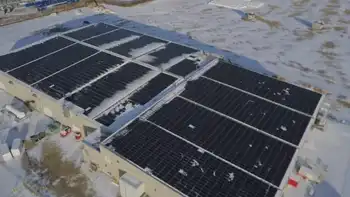TVA reactor suffers cooling system shutdown
By WBIR.com
High Voltage Maintenance Training Online
Our customized live online or in‑person group training can be delivered to your staff at your location.

- Live Online
- 12 hours Instructor-led
- Group Training Available
The incident came two days after the plant 100 miles south of Nashville was cited by federal authorities with a "red" level violation for a cooling system valve that failed at its Unit 1 reactor.
Red is the highest level in terms of safety significance.
Federal regulators have vouched for the safety of U.S. nuclear power plants and emergency planning at them. Still, a Nuclear Regulatory Commission task force said that it probably will recommend changing federal rules to upgrade safety and preparedness.
The task force said it will address a range of issues, including the ability of plants to deal with prolonged power outages caused by earthquakes, floods, fires or other catastrophic events.
The NRC viewed the incident at TVA's Unit 3 reactor as nothing major.
"It's something that they were able to fix on the spot, and get it back operating," said Roger Hannah, an NRC spokesman.
Gretel Johnston of Scottsboro, Ala., a few miles from where TVA is considering completing another nuclear plant, said the NRC doesn't look critically enough at the big picture.
"That's not good enough," said Johnston, with Mothers Against Tennessee River Radiation. "It doesn't mean we don't need to worry. It means something is not functioning properly."
The malfunction at Browns Ferry, located on the river in Athens, Ala., resulted in the water temperature in reactor Unit 3 rising 10 degrees to 122 degrees. While running tests, workers didn't isolate one electrical section from other plant equipment, said Ray Golden, TVA spokesman. Stray voltage triggered the short.
"That's the lesson learned for us," he said.
The three reactors have been shut down since April 27, when storms and tornadoes swept through the South, destroying key electricity transmission lines to and from the plant.
The storms also knocked out most of TVA's sirens at Browns Ferry and also its Sequoyah Nuclear Plant near Chattanooga. They're intended in an emergency to alert residents and businesses within 10 miles.
Most of the sirens were restored in about five days.
The Browns Ferry reactors are expected to go back online within a week.
The cooling system shutdown was the third since the storms. After several days of the Browns Ferry reactors being off line and heat levels dropping, the cooling system had been lost once for a few minutes and another time for close to an hour, Golden said.
The temperature rose no more than 10 degrees then, too, he said.
A shutdown of several hours would be cause for alarm, but backups that are in place, which include multiple diesel generators, functioned as intended, he said.
The danger is for water to heat up to boiling and dissipate, leaving fuel rods exposed to the air so they start throwing off radioactivity and could eventually melt. That's what happened in Japan, where a blackout after an earthquake and tsunami stopped cooling water from moving through reactor cores and pools where used fuel sits.
Radioactive releases began that contaminated air, water and land. Tokyo Electric Power Co. officials, who are still investigating what happened and determining what to do, say that fuel rods melted in at least one reactor.
The Japanese reactors are of the same General Electric design as at Browns Ferry, but TVA officials say more backup systems have been added to its plant.
As the crisis continues, two nonprofit organizations, iWatch News and ProPublica, have released reports saying that the NRC has granted scores of exemptions to fire regulations and let safety issues go uncorrected in the United States.
Browns Ferry has drawn the NRC's attention on several counts. It's the plant where a worker in 1975 started a fire accidentally by using a candle to check for leaks, an incident that prompted the NRC to upgrade fire safety regulations in 1980.
Many plants, including Browns Ferry, have not met current standards.
"We're transitioning from one fire protection program to another," Golden said. "It will take about three years to get all the work required done and will cost tens of millions of dollars.
"We're committed to it. In the meantime, the fire protection system at Browns Ferry is very strong."
TVA has been relying on improved and extensive training of its employees to deal with possible fires, rather than moving to equipment with automatic responses in a fire, he said.
"We're well along," he said of the switch.
"Fire protection is a very important aspect of overall safety of the plant. We're committed to have a state-of-the-art program."
The defective valve that was discovered last October at Browns Ferry did not endanger employees or people around the plant, according to the NRC.











